| Listing 1 - 10 of 11 | << page >> |
Sort by
|
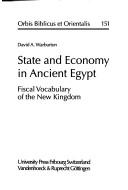
ISBN: 3727810807 3525537875 9783727810800 9783525537879 Year: 1997 Volume: 151 Publisher: Fribourg Academic press
Abstract | Keywords | Export | Availability | Bookmark
 Loading...
Loading...Choose an application
- Reference Manager
- EndNote
- RefWorks (Direct export to RefWorks)
Taxation --- Egyptian language --- Terms and phrases. --- Duties --- Fee system (Taxation) --- Tax policy --- Tax reform --- Taxation, Incidence of --- Taxes --- Finance, Public --- Revenue --- Afroasiatic languages --- Terms and phrases --- Egypt --- Economic conditions --- Politics and government --- Taxation - Egypt - Terminology. --- Egyptian language - Terms and phrases. --- Impôt --- Égypte --- Antiquité --- Terminologie --- Politique et gouvernement --- Jusqu'à 332 av. J.-C. --- Conditions économiques
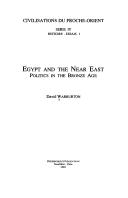
ISBN: 9782940032129 2940032122 Year: 2001 Publisher: Neuchâtel Recherches et publications
Abstract | Keywords | Export | Availability | Bookmark
 Loading...
Loading...Choose an application
- Reference Manager
- EndNote
- RefWorks (Direct export to RefWorks)
Bronze age --- Âge du bronze --- Proche-Orient --- Égypte --- Egypt --- Middle East --- Relations extérieures --- Politics and government --- History --- Politics and government. --- Âge du bronze
Book
ISBN: 2940032157 9782940032150 Year: 2003 Publisher: Neuchatel : Recherches et Publications,
Abstract | Keywords | Export | Availability | Bookmark
 Loading...
Loading...Choose an application
- Reference Manager
- EndNote
- RefWorks (Direct export to RefWorks)
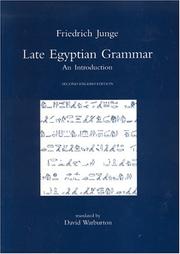
ISBN: 0900416858 9780900416859 Year: 2005 Publisher: Oxford Griffith institute
Abstract | Keywords | Export | Availability | Bookmark
 Loading...
Loading...Choose an application
- Reference Manager
- EndNote
- RefWorks (Direct export to RefWorks)
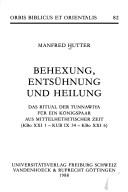
ISBN: 3727805811 3525537123 9783727805813 Year: 1988 Volume: 83 Publisher: Freiburg Universitätsverl.
Abstract | Keywords | Export | Availability | Bookmark
 Loading...
Loading...Choose an application
- Reference Manager
- EndNote
- RefWorks (Direct export to RefWorks)
Scarabs --- 902 <33> --- 903.26 --- -Amulets, Egyptian --- Insect forms in art and archaeology --- Archeologie--Oud-Palestina. Judea --- Prehistorie: voorwerpen van aanbidding --- -Archeologie--Oud-Palestina. Judea --- 903.26 Prehistorie: voorwerpen van aanbidding --- 902 <33> Archeologie--Oud-Palestina. Judea --- -903.26 Prehistorie: voorwerpen van aanbidding --- Amulets, Egyptian --- Scarabs - Israel
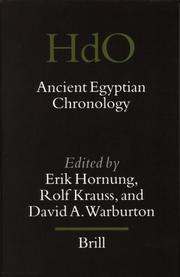
ISBN: 9004113851 9789004113855 9786611384197 1281384194 9047404009 9789047404002 9781281384195 6611384197 Year: 2006 Volume: 83 Publisher: Leiden Brill
Abstract | Keywords | Export | Availability | Bookmark
 Loading...
Loading...Choose an application
- Reference Manager
- EndNote
- RefWorks (Direct export to RefWorks)
This volume deals with the chronology of Ancient Egypt from the fourth millennium until the Hellenistic Period. An initial section reviews the foundations of Egyptian chronology, both ancient and modern, from annals and kinglists to C14 analyses of archaeological data. Specialists discuss sources, compile lists of known dates, and analyze biographical information in the section devoted to relative chronology. The editors are responsible for the final section which attempts a synthesis of the entire range of available data to arrive at alternative absolute chronologies. The prospective readership includes specialists in Near Eastern and Aegean studies as well as Egyptologists.
Chronology, Egyptian. --- Egypt --- History --- Antiquities. --- Chronology --- Antiquity --- Chronologie égyptienne --- Egypte --- Chronology. --- Histoire --- Chronologie --- Antiquités --- Chronology, Egyptian --- Egyptian chronology --- Égypte --- Ägypten --- Egitto --- Egipet --- Egiptos --- Miṣr --- Southern Region (United Arab Republic) --- Egyptian Region (United Arab Republic) --- Iqlīm al-Janūbī (United Arab Republic) --- Egyptian Territory (United Arab Republic) --- Egipat --- Arab Republic of Egypt --- A.R.E. --- ARE (Arab Republic of Egypt) --- Jumhūrīyat Miṣr al-ʻArabīyah --- Mitsrayim --- Egipt --- Ijiptʻŭ --- Misri --- Ancient Egypt --- Gouvernement royal égyptien --- جمهورية مصر العربية --- مِصر --- مَصر --- Maṣr --- Khēmi --- エジプト --- Ejiputo --- Egypti --- Egypten --- מצרים --- United Arab Republic --- Archaeological specimens --- Artefacts (Antiquities) --- Artifacts (Antiquities) --- Specimens, Archaeological --- Material culture --- Archaeology --- To 332 B.C. --- Egypt. --- ARE --- Ijiptʻ --- Chronologie égyptienne --- Égypte --- Jusqu'à 332 av. J.-C. --- Antiquités
Book
ISBN: 3952260843 9783952260845 Year: 2007 Publisher: Zürich Living human heritage
Abstract | Keywords | Export | Availability | Bookmark
 Loading...
Loading...Choose an application
- Reference Manager
- EndNote
- RefWorks (Direct export to RefWorks)
In the Amduat, the night-journey of the Egyptian Sungod is divided into twelve hours, each of them containing an enormous amount of insight into the human psyche.The entire Amduat could be called the first “scientific publication” of humankind describing or mapping the dangers, but also the regenerative capabilities of the night-world, providing answers to basic human questions.The synopsis of the different scenes of the Amduat, all in color, together with its explaining text, is unique.This book is a treasure for all those who want to explore the archetypal structure of the objective psyche, with its helpful but also with its dangerous forces.
Egyptian language --- Thutmose --- Book of that which is in the nether world --- Egypt. --- Thutmose - III, - King of Egypt
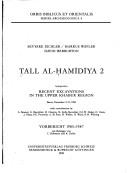
ISBN: 3727806745 Year: 1990 Publisher: Freiburg Universitätsverl.
Abstract | Keywords | Export | Availability | Bookmark
 Loading...
Loading...Choose an application
- Reference Manager
- EndNote
- RefWorks (Direct export to RefWorks)
Book
ISBN: 9789042948129 9042948124 Year: 2022 Publisher: Leuven : Peeters,
Abstract | Keywords | Export | Availability | Bookmark
 Loading...
Loading...Choose an application
- Reference Manager
- EndNote
- RefWorks (Direct export to RefWorks)
"Most of today's approaches to growth are expressed in terms related to goods, innovations, savings, technology, etc., and all are related to modern thought and recent historical developments. From the standpoint of technology and production, the economic historian Robert C. Allen has demonstrated that the route to the economies of the 20th century AD was determined by what happened in Britain in the 18th and 19th centuries AD. In this sense, one can point out that the context of the Industrial Revolution dominates thought about economic growth. By contrast, from the standpoint of finance, it can be suggested that the route to the 21st century AD began in Mesopotamia in the fifth millennium BC. The issue of the difference stands at the centre of what causes economic growth - and that is the principle concern of the discussions in this volume, the outcome of the workshop Economic Growth in Antiquity, held in Berlin in 2016"
Civilisation antique --- Civilization, Ancient. --- Aspect économique.
Book
ISBN: 9781844657094 1844657094 Year: 2013 Publisher: Durham : Acumen,
Abstract | Keywords | Export | Availability | Bookmark
 Loading...
Loading...Choose an application
- Reference Manager
- EndNote
- RefWorks (Direct export to RefWorks)
Religion and sociology --- History --- Europe --- Europe --- Religion --- History --- Religious life and customs.
| Listing 1 - 10 of 11 | << page >> |
Sort by
|

 Search
Search Feedback
Feedback About UniCat
About UniCat  Help
Help News
News